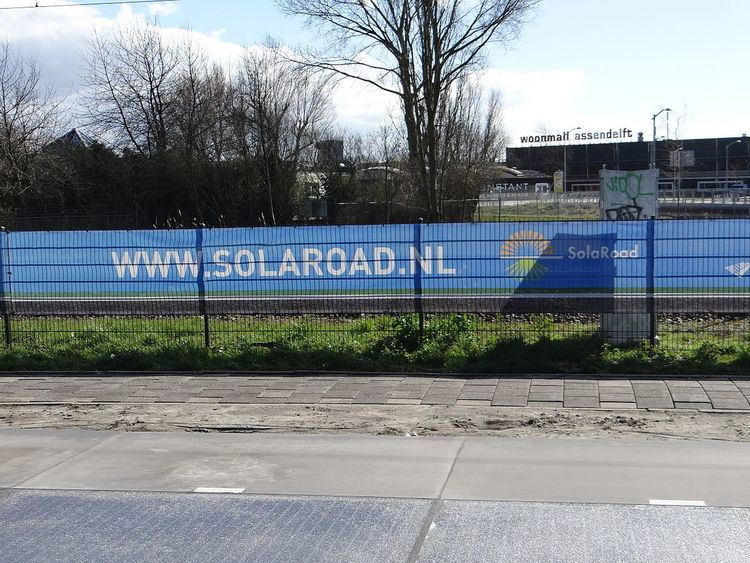Phone +31 6 53548030 | ||
 | ||
Hours Open today · Open 24 hoursSaturdayOpen 24 hoursSundayOpen 24 hoursMondayOpen 24 hoursTuesdayOpen 24 hoursWednesdayOpen 24 hoursThursdayOpen 24 hoursFridayOpen 24 hoursSuggest an edit Profiles | ||
The SolaRoad is the world's first bike path made from solar panels, and is a prototype project testing the feasibility of various proposal for smart highways. The 72-metre (236 ft) path opened in the week of 21 October 2014, and was designed by a consortium of organizations, which built the pathway in Krommenie, Netherlands.
Contents
- Finding 3 million euro of waste solaroad eevblog
- Consortium
- Technology
- Problems and critics
- Results of trial
- Comparable initiatives
- References
The path was formally opened in November 2014 by the Dutch Minister of Energy Henk Kamp.
Finding 3 million euro of waste solaroad eevblog
Consortium
The technology was developed by a consortium consisting of Netherlands Organisation for Applied Scientific Research (TNO), Imtech (Dynniq) and Ooms Civiel, with a grant of €1.5 million from the province (county) North Holland as owner of the path. The total cost of the pilot project was €3.5 million. In addition to the €1.5 million from the province North Holland were that contributions from TNO, Ooms Civil, Imtech (Dynniq) and the European PV-Sin project (partly subsidized by the Dutch government).
Technology
The road surface consists of prefabricated panels with a surface of 1 centimetre (0.39 in) thick hardened glass. Beneath the glass solar cells are installed. TNO states that this energy can be used for lighting of the road, traffic lights and road signs. The energy is also delivered to local dwellings. TNO thinks in future electrical vehicles might be driven by the road itself. This prototype will be studied over the next three years.
In the first month, the path delivered enough energy to sustain one family.
Problems and critics
On 26 December 2014, a 1-square-metre (11 sq ft) section of the top-layer coating detached from the glass layer, and that portion of the bike path had to be repaired.
In October 2015 the top-layer coating was in such poor condition that it was replaced.
Critics of the technology see several problems:
Results of trial
After a six month test engineers report results are "better than expected". "If we translate this to an annual yield, we expect more than the 70kWh per square metre per year," Sten de Wit, spokesman for SolaRoad, the company that put it in.
The EEVblog compared the 6 and 12 months trial results from SolaRoad with data from 3 rooftop solar systems within a few kilometers of the prototype road. The data showed that rooftop solar systems produced twice the output of the SolaRoad per square meter over the same period.
In November 2015 it was announced that the path had produced 9800 kWh of electricity in one year.
In October 2016, the path was expanded with 7 new improved elements. Two elements of the first generation were removed. In total the expanded path consist of 32 elements (83 meters).
In February 2017, a crack appeared in the top coating of one of the improved elements.
Comparable initiatives
An innovative cycle lane in South Korea has a solar powered roof, providing shelter from sun and rain for cyclists while generating electricity. In this concept the solar panels are directed in the most profitable position for optimal efficiency. The 32 km (20 mile) path between Daejeon and Sejong runs down the middle of a six-lane motorway.
Another economically viable solution for harvesting energy from roads is Road Energy Systems (RES). This system is based on solar water heating and could easily be placed in a road without changing its appearance.
